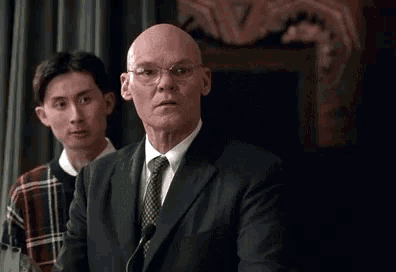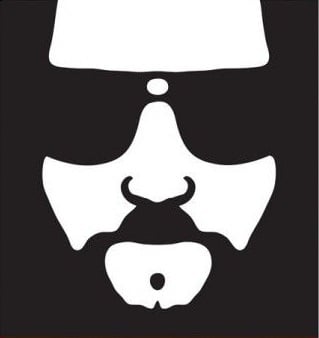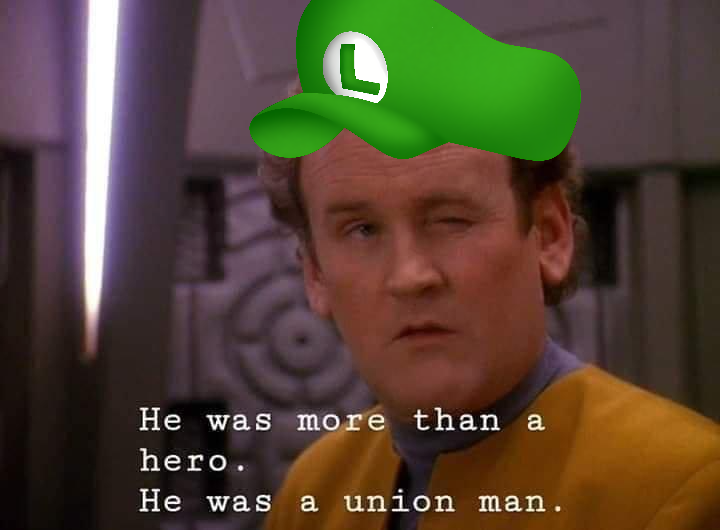Interesting argument in the form of discussion between Kirk and Bones over drinks.
It’s an interesting discussion. Not really what I expect from a meme sub but something out of r/daystrominstitute .
I think Kirk’s argument (essentially that there’s no ethical or moral justification for not even attempting to save them) is predicated on the fact that no-win situations of that specific type don’t exist in reality.
That kind of situations happen, Jim”
Kirk takes a sip.
“Do they, Bones? We’ve been at this for three years. Tell me bones, how many times have we faced a real no-win situation? A certain death in face of helping people? I write the logs, Bones. The answer is never. Not once. Sure, we lost feathers, and couldn’t always save everybody. But each time we made it, Bones, and each time, we saved people. The only reason the Maru is a no-win situation is because someone decided it should be. To make a point.”
He is of course right in that if you attempt rescue, the Kobayashi Maru sim will literally keep spawning enemy ships until you’re dead. So it was designed to be unwinnable in logical sense that goes beyond the practicalities of tactics and crew competence.
Kirk’s argument is that making the pragmatic choice of just leaving the ship to it’s fate is not justifiable because such scenarios (infinitely spawning enemies) don’t exist, and even making cadets take this course and conditioning them to make the pragmatic choice is therefore immoral.
I think there’s more detail that can be added to this though - in the Kobayashi Maru sim every cadet knows what the sim is before they go in there. It’s not some secret - they all know it’s unwinnable. If you somehow knew that it was unwinnable then the ethics of leaving them are tenable depending on your beliefs. But in reality you can’t know. You shouldn’t pretend to know.
I think a key part of what Kirk is trying argue here is that in reality, you cannot ever truly know that the situation is completely hopeless, and your duty as a Starfleet officer should be to try. Try your hardest. Do what you can. Save who you can. Fight. Try.
The thing that offends Kirk so much about this scenario is that it gives officers a ethical license to not even try, something that is completely antithetical to his conception of being a Starfleet officer.
On that count, I think he’s right.

…is that James Carville?
The Ragin’ Cajun himself!
Edit: To clarify, this is taken from Old School (2003), where Dean Pritchard (Jeremy Piven from PCU (1994) makes use of Carville for the debate portion of the challenge to the fledgling fraternity.
Maybe the Kobayashi Maru is really a test for engineers, not captains. I can imagine Rutherford coming in with a new transporter program that skews the odds in favor of saving the crew
The thing that offends Kirk so much about this scenario is that it gives officers a ethical license to not even try, something that is completely antithetical to his conception of being a Starfleet officer.
I mean, the thing is literally a test. Isn’t that just how a cadet fails it?
Don’t cadets “fail” either way?
The scenario always ends with their simulated destruction, but that’s not what I mean.
If every outcome is considered equal, then how would it be useful to Starfleet? Or said another way, if Starfleet doesn’t care how cadets react to a no-win scenario, why does it need to know?
I always figured the failure conditions were things like cowardice or paralyzing indecision – character flaws unwanted in a leader.
Does leaving the ship to it’s fate count as cowardice?
That decision technically saves the most lives.
Yes, because you can’t know that a priori.
I think there’s more detail that can be added to this though - in the Kobayashi Maru sim every cadet knows what the sim is before they go in there. It’s not some secret - they all know it’s unwinnable. If you somehow knew that it was unwinnable then the ethics of leaving them are tenable depending on your beliefs. But in reality you can’t know. You shouldn’t pretend to know.
Honestly, the scenario here is illuminating more for seeing how the cadet would respond. it’s also a great way to develop new tactics. In that sense, setting a "new high score"is a “Win”, even if you get blown up in the scenario. I still stand by saying that the excercise was a recruitment tool for selecting possible operatives for Section 31 (or whatever the agency was called then,)
personally, I think my response would have been to try and take the Maru under tow using the tractor beams; then run like…uh… well… a fast waddle? It’s presented as a binary choice. Either try and save the crew and get blown up, or try and fight and get blown up. it doesn’t need to be binary- you have a massive crew and can get one detail working the problem of rescuing the Maru crew while you and the bridge crew work on fighting the ship. Failing towing… shuttles. Failing shuttles… maybe docking and merging shields of both ships…? Possibly, lowing shields in one side, while using the maru for cover on that side and beaming that way?
(side note, I forget if shields had to be lowered for shuttles. Inany case, in TNG, that was true. the real question I have is what kind of idiot engineer designed a ship’s shield system that couldn’t be turned off in a specific portion of the hull to allow beaming with a relatively small opening? Or, maybe, just hear me out, a sort of ‘space lock’… like airlock hatches, that allow you to go out, but with shields.)
Honestly, the scenario here is illuminating more for seeing how the cadet would respond. it’s also a great way to develop new tactics. In that sense, setting a "new high score"is a “Win”, even if you get blown up in the scenario. I still stand by saying that the excercise was a recruitment tool for selecting possible operatives for Section 31 (or whatever the agency was called then,)
I agree that it could be, but is there any canon evidence that they even assign scores? What would the score even be based on? If you take any action other than leaving the ship to its fate, you’re destined to die anyways. So is it based on how long you survive?
I’m sure starfleet officers go through hundreds or thousands of tactical sims to train tactics and encourage tactical creativity etc. From what I know, Kobayashi Maru is specifically not for that purpose. It’s useful in getting cadets to see what it feels like to be in a no-win situation, and to get them to think about it, but this purpose for it and the specific way its framed opens it up to Kirk criticism in this post.
It’s useful in getting cadets to see what it feels like to be in a no-win situation, and to get them to think about it, but this purpose for it and the specific way its framed opens it up to Kirk criticism in this post.
No it’s not useful for that. Not even remotely true. They go into it knowing that it’s just something they have to get done. You do it once, get clobbered and move on.
It’s not useful to impart experience because it’s known you’re going to lose. In-universe, a captain would not have that knowledge.
That knowledge changes everything about how you approach it- and together with the knowledge that it’s “just a sim”
If you wanted to give that experience- as best you can without killing lots of cadets- then you remove that knowledge, slipping ezcercisss in that feel “normal” until they’re not.
As for how to score it? There’s plenty of ways. Number of ships you kill. How long you survive, not to mention tactical performance etc.
Do you really need a canon source to draw that inference? Of course they have a way to score an exam. (And every exam would have been scored. That’s the point of them. You have to evaluate how you perform before you can begin to improve.)
This is the best kind of Trek right here. I could see Kirk saying this, for sure. I do think Bikes would agree with Kirk, though. McCoy always prioritized saving lives.
That said, this double dumbass should have known that Kirk has never heard the word ‘bullshit’ in his life.
That was less weird to me than him calling it a video game.
On the other hand, Kirk did have a Commodore PET in his apartment in Wrath of Khan. Maybe he’s into extremely retro games.
It’s neat to see established characters discussing something we consider a given, but there’s nothing esoteric about it. Star Trek as a franchise has always been bald-faced about what the Kobayashi Maru test is and why every cadet has to take it.
“How we face death is at least as important as how we face life.” - Admiral Kirk, Wrath of Khan
“Furthermore, you have failed to divine the purpose of the test.”
“Enlighten me again.”
“The purpose is to experience fear - fear in the face of certain death. To accept that fear and maintain control of oneself and one’s crew. This is a quality expected in every Starfleet Captain” - Spock and Kirk, Star Trek 2009
Starfleet learns two important things about each officer-in-training during this test. Whether or not they choose to ignore standing orders and face certain destruction to do the right thing, and how well they handle it when that gamble causes them and everyone they are responsible for to lose.
I imagine stuff like that ends up in every officer’s permanent record. I imagine it determines if Ensign Skippy goes on to command a first-contact vessel carrying the banner of the Federation or a patrol ship in Sol Sector… or be a Captain at all.
So… I’d go ahead and say that Kirk here is wrong.
The simulation isn’t about teaching starfleet prospective officers anything. a single “This is stupid but we have to go through it,” simulation going to convince anything of any one or “teach” all the bullshit they say it does.
The real point of the exercise is that it’s a filter. Remember, the crew performance is observed. People are watching. This scenario and exercise is mandatory for all star fleet cadets because they’re looking for people that never get involved in the first place. Or are willing to follow orders or “greater good” bullshit.
Kirk was likely noticed for being extremely determined and a certain disregard for stupid rules. It also sets him up for being passed over on the seedier side of starfleet because, interestingly, that certain disregard for stupid rules comes from his integrity… which… is why Kirk was involved in episodes like Private Little War. (despite maybe not being “inside” he was still considered “useful” enough when he was in a convnient place?)
This is a rampant fan theory, sure, but section 31 would have to recruit from somewhere, and the academy is a wonderful place for that. Slipping a few exercises to see how cadets respond is… well, it’d be more surprising if they didn’t.







